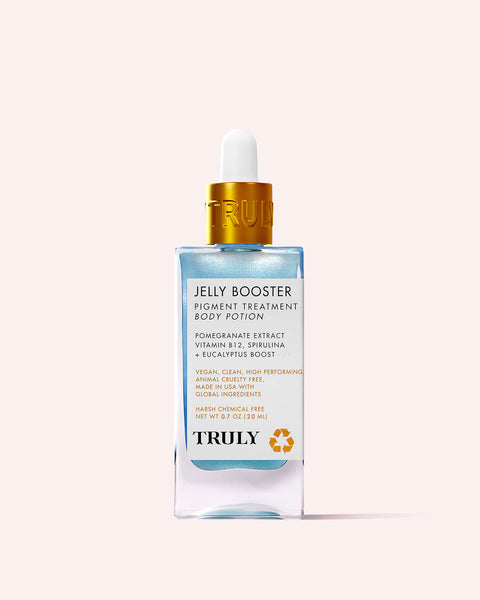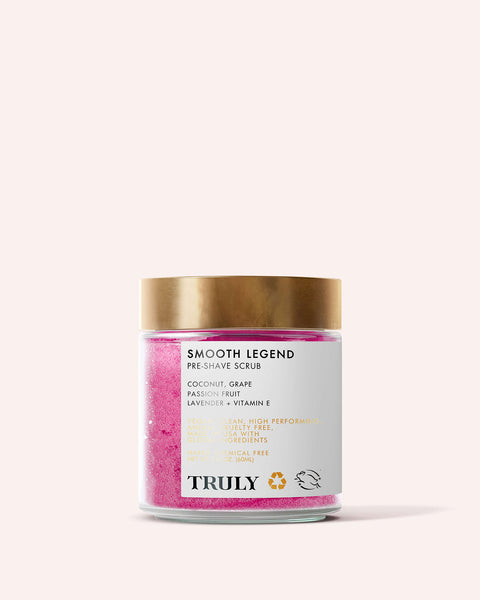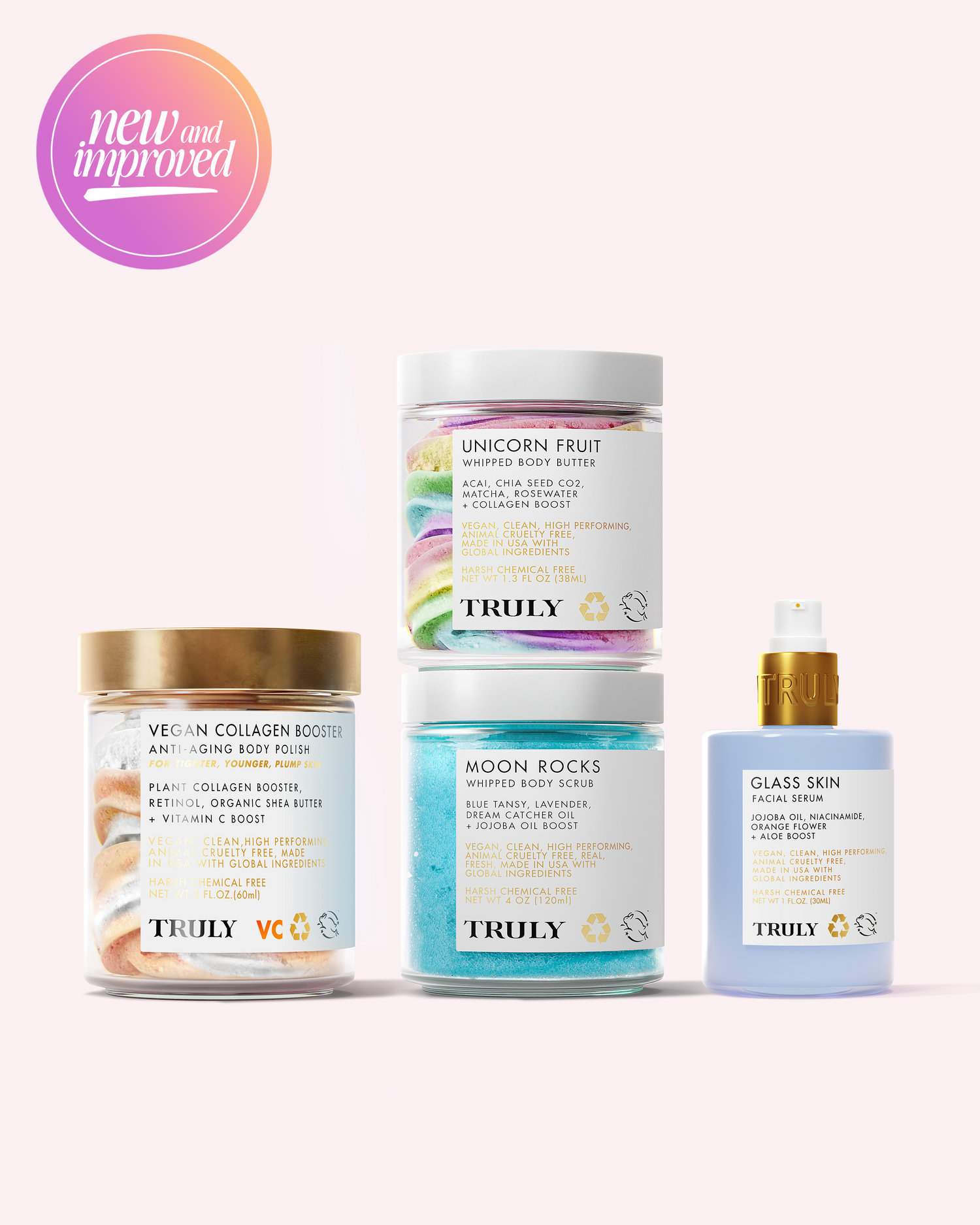Adult Acne: What, Why, + How To Treat It

Remember how everyone told you in your teens that your breakouts would be gone once you hit your 20s? Well, that was obviously a lie.
You spent all that time fantasizing about becoming an adult only to discover that those pesky pimples haven't left. Or worse, they left...and then came back. Shudder!
Adult acne is a reality more and more of us are facing. It sucks, it really does. But luckily, there are ways to treat it and finaaaallly wake up with that flawless complexion you've been dreaming of.
Here, your guide to dealing with adult breakouts.
What is Adult Acne?
Adult acne is a common skincare complaint that affects women 26 and above. According to a 2018 review, 12% to 22% of women ages 26 to 44 experience acne in some form of another -- whether it be blackheads, whiteheads, nodules, papules, pustules, or cysts.
While we tend to think of acne as a problem for teens, acne is just as common in adults -- particularly women.
"Acne occurs frequently after the teenage years and at significantly higher rates in women compared with men," says Doris Day, a clinical associate professor of dermatology at NYU Langone Medical Center. She adds that "as many as 50 percent of women will suffer from acne at some point in their adult lives."
Why Adult Acne Happens
At the root of all acne is a clogged pore, something that happens due to a build-up of sebum (oil), dead skin cells, and dirt.
Here are the main causes of acne in adults:
Hormonal Fluctuations
According to the derms, fluctuations in hormones, such as before your menstrual cycle is a leading cause of adult acne.
With the increase in production of progesterone, your skin's oil production rates rise. Androgens like testosterone can also increase sebum production, leading to clogged pores and ultimately hormonal acne. Those suffering from polycystic ovary syndrome are more likely to experience adult-onset acne.
You'll know it's hormonal if breakouts appear on the chin and jawline around the time of your period, during or after pregnancy, during menopause, or when you stop using birth control pills.
Using the Wrong Skincare Products
There's a reason dermatologists are always telling you to pick your cleansers and moisturizers based on your skin type. It's because it matters -- A LOT.
If you have oily skin or acne-prone skin, you should be using oil-free, non-comedogenic skincare products, as these are less likely to clog your pores. Stick to lightweight lotions and avoiding slathering on heavy creams.
Similarly, dry skin types should be using products that hydrate and restore moisture in the skin. Otherwise, it could end up getting drier, and that may bring on blemishes.
Over-Cleansing
Believe it or not, there is such a thing as over-washing your face.
Cleansing any more than twice a day can cause your skin to produce excess oil to compensate for the dryness. This in turn leads to clogged pores and ultimately, breakouts. Most people actually only need to cleanse once a day, especially those with dry or sensitive skin.
How to Treat Adult Acne
It's time to treat acne...the grown up way!
Start Using Acne-Fighting Ingredients
That includes salicylic acid, benzoyl peroxide, glycolic acid, and retinoids. Consider what type of acne you have before picking a product. Are you dealing with painful red bumps? Look for formulas containing benzoyl peroxide, which kills acne-causing bacteria while reducing inflammation? Dealing with blackheads and whiteheads? Go with salicylic acid. It exfoliates away excess oil and dead skin cells from the skin’s surface, clearing the pores of impurities.
And if you're mainly looking to purify the pores and minimize their appearance, turn to glycolic or retinol.
Try Truly's CBD Jelly Bundle, a skincare routine designed for acne-prone peeps, which uses blemish-banishing ingredients like retinol, salicylic acid, tea tree oil, glycolic acid, and CBD to clear pores and clarify complexions.

Switch Heavy Creams to Lightweight Serums
Indulging in rich, luxurious lotions and butters feels amazing. Is it any good for your skin, though? Not really.
"Once women hit their mid 20s, many start buying antiaging products, but the majority are too rich for their skin type," says Jordana Mattioli, a medical esthetician in NYC. "They’re designed for mature skin that doesn’t produce as much oil as it used to." She recommends using a lightweight moisturizer that won’t clog your pores. Alternatively, try a serum. And always remember to follow up with sunscreen as the final step!
Try Truly's Glass Skin Facial Serum. It's made with a blend of willowbark and sea kelp to brighten, hydrate, and minimize pores.

Watch Your Diet
Food isn't proven to cause acne, but it can trigger a surge in oil production as well as inflammation which can all lead to acne.
"Dietary factors like high glycemic index foods have been shown to aggravate acne in predisposed people," says New York City dermatologist Joshua Zeichner, M.D. "The increased sugar load promotes inflammation that in turn leads to breakouts."
Try cutting back on processed sugary foods in favor of healthy, gut-friendly options like wild fish, nuts, and fresh fruits.
Put a Patch On it
Instead of squeezing your zits, which only ends badly (yeah, hello acne scars!), put a patch over them. And by patch, we mean acne patches.
Try Truly's Super Blemish Trio, a set of hydrocolloid stickers in three different shapes: stars, hearts, and hemp leaves to drain, zap, and heal your zits!

Consider Oral Medications
If you have severe acne or cystic acne, over-the-counter acne treatments may not cut it. In this case, visit your doctor or dermatologist for a prescribed oral medication.
Medications that can balance hormonal levels, such as oral contraceptives and spironolactone, are helpful in curbing hormonal fluctuations and acne flareups. Additionally, oral retinoids like isotretinoin may be a better treatment option than topical retinoids like Adapalene. For severe, cystic acne, you may need to be prescribed corticosteroids.
Ask your derm about what would be the most effective treatment for you, and the possible side effects of oral medications. They may also recommend in-office treatments such as peels, laser, and LED therapy.
You should also visit your dermatologist if you have a skin condition or skin disease such as rosacea, eczema, or psoriasis.








